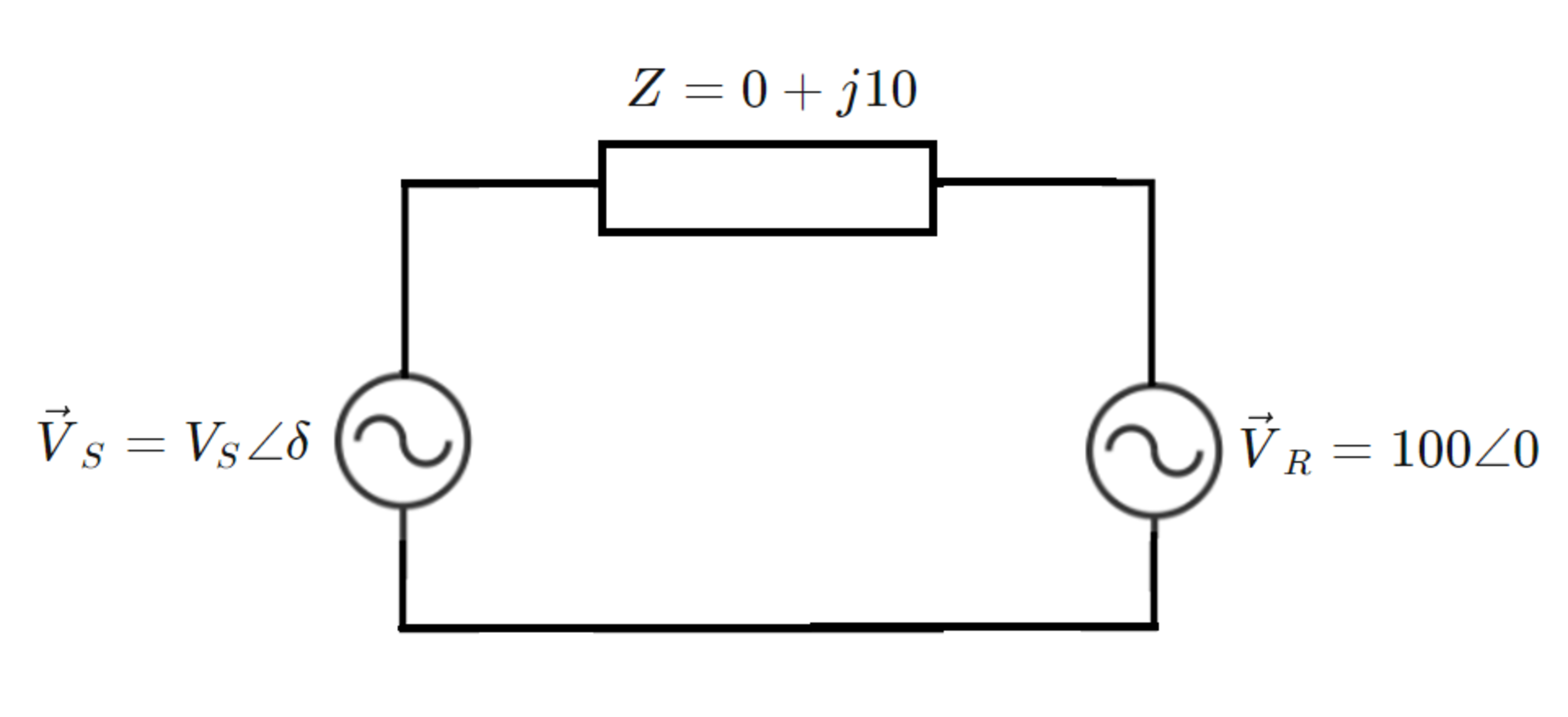Tweaking P and Q
Two ideal AC voltage sources are connected to the ends of a transmission line segment. is the magnitude of the Source voltage, and is its phase angle in radians.
If is the active power consumed by Source , and is the reactive power consumed by Source , calculate the following sum of partial derivative ratios, with and as baseline numbers.
Bonus: What is the significance of each ratio?

The answer is 3.111.
This section requires Javascript.
You are seeing this because something didn't load right. We suggest you, (a) try
refreshing the page, (b) enabling javascript if it is disabled on your browser and,
finally, (c)
loading the
non-javascript version of this page
. We're sorry about the hassle.
General outline of the solution
The current through the load is:
I = Z V S − V R
The resultant power (consumed by the source R) is the complex number:
S = V R I = P R + j Q R
Here, P R and Q R are functions of δ and V S .
The real part of S is the active power while the imaginary part is the reactive power. From here, the required ratio is computed. Each ratio highlights how sensitive the active power component is (relative to the reactive power component) to the given parameters V S and δ . A higher ratio (magnitude) means that for a small change in a parameter, the active power changes more relative to the reactive power. I think there might be a better way of interpreting this.